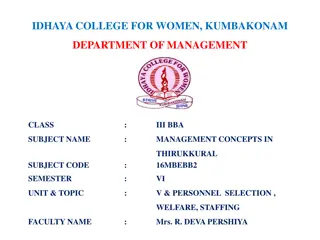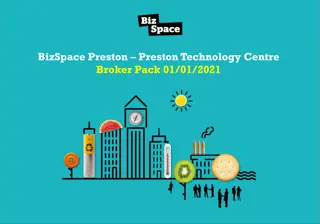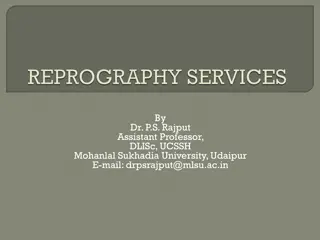
Understanding Reprography in Document Copying and Reproduction
Exploring the concept of reprography, which involves various methods for reproducing printed or written materials, including microcopy, photocopying, and more. This process offers cost-effective alternatives for document distribution, storage, and long-term preservation.
Uploaded on | 0 Views
Download Presentation

Please find below an Image/Link to download the presentation.
The content on the website is provided AS IS for your information and personal use only. It may not be sold, licensed, or shared on other websites without obtaining consent from the author. If you encounter any issues during the download, it is possible that the publisher has removed the file from their server.
You are allowed to download the files provided on this website for personal or commercial use, subject to the condition that they are used lawfully. All files are the property of their respective owners.
The content on the website is provided AS IS for your information and personal use only. It may not be sold, licensed, or shared on other websites without obtaining consent from the author.
E N D
Presentation Transcript
By Dr. P.S. Rajput Assistant Professor, DLISc, UCSSH Mohanlal Sukhadia University, Udaipur E-mail: drpsrajput@mlsu.ac.in
`Repro means to rewrite or to reproduce and `graphy means printed or written matter. Therefore, reprography means reproduction of printed or written matter. Reprography comprehends processes and methods used for both copy and duplicating (multicopies) of documents. Reprography is now internationally accepted term which replaces the earlier document copying or documentary reproduction . To sum up, Reprography includes microcopy (micrographics), photocopy,duplicating and in-house printing
The art or process of copying, reprinting or reproducing printed material. Collins English Dictionary. The reproduction of documents, written materials, drawing, design, etc., by any process making use of light rays or photographic means, including printing,, microfilming, office duplicating and like. offset photography,
It offers an economical alternative to paper work. Reduced cost. Multiple copies/distribution. Save money of students and researchers. Reduce size Increase storage capacity Long term preservation No space problem Minimum maintenance More utilization
Roll Film: Microform in roll form was one of the first microforms and it is simply a length of microfilm with 16 mm, 35 mm or 105 mm in width on a reel, spool or core. Roll films can be contained in a cartridge or cassette which protects the processed film from finger prints,excessive dust ,and other similar damages. Microcard (Micro-opaque): A micro-opaque has unitized multiple images printed on photograph paper arranged both sides and is used primarily for reading because it cannot be easily duplicated. Micro-opaques are now obsolete and are replaced by microfiches.
Microfiche: A microfiche is a sheet of microfilm containing multiple microimages (negative or positive) in a grid pattern. The microfiche usually contains identification information which can be read without magnification. A standard microfiche has the dimension 6 x 4 or 105 x 148 mm and can take 60-98 pages on reduction scale 1:20 or 1:24 respectively. Ultrafiche: Ultrafiche is another form of microfiche which contains about 2000-3000 pages having high reduction ratio exceeding 90x. Ultrafiche is not in common use. e) Aperture Cards: An aperture card is an opaque tab card with 4 rectangular hole or holes designed for mounting or insertion of microfilm. The card can also contain key-punched, interpreted and printed information for identification and retrieval. It is an united medium useful for engineering drawings system
Ultrastrips: Ultrastrips are short lengths of processed microfilm containing material photographed at a very high reductions. These are generally created in a two-step process which consists of filming the material and then re-filming this film at higher reductions. This is an expensive process requires clean room environment. Chips: A microfilm chip is a small, precisely cut unit of microfilm which contains micro images. These chips are stored in cartridges or cells in retrieval devices. Retrieval is done automatically by means of electronic circuitry and electro-mechanical equipment. The microfilm chip systems are not commonly available and are custom- designed primarily for special applications and are very expensive.
Jackets: Roll film can be cut to produce film in strips which can then be inserted in jackets. The jacket is a plastic carrier with single or multiple sleeves, or channels, which are designed to hold the film strips, to protect them and to facilitate the organization of the material. The jacket has many of the characteristics of a microfiche; it can be duplicated and distributed easily and inexpensively and has the added advantage of permitting the insertion of new material or replacement of existing material within the microform.
Micrographics For Document Management The increase in volume and the necessity of managing huge paper systems which require multiple copies of documents filed and cross-referenced, as well as controlling the flow of incoming and outgoing documents,dictate the use of a new technology; e.g., microfilm document files supported by indexes. Microfilm greatly reduces the space problem, provides for the duplication and distribution of documents and provides easy access to materials. Moreover, microfilm alleviates the filing and out-of-file problems and protects the physical integrity of files by providing back-up and archival copies.



